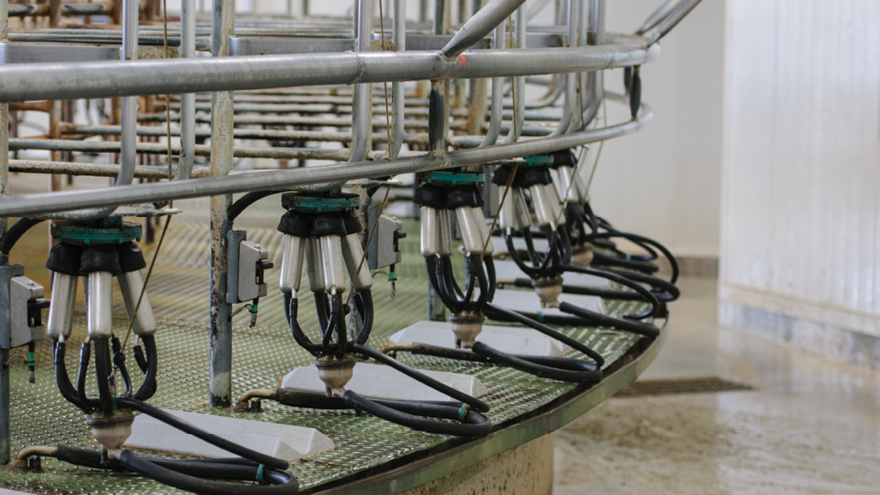
Watch out for thermoduric bacteria risk in dairy sheds
Summer brings a higher risk of thermoduric bacteria in the dairy shed with most thermoduric grades occurring between December and March. Learning about these bacteria goes a long way in helping you prevent it, or if it occurs, helping you find its cause.
Thermoduric bacteria results in spoilage of dairy products. It is difficult to kill as it tolerates heat and survives pasteurisation. The only way of killing it is having the bacteria in direct contact with a sanitiser and using a daily alkali wash until the grade is resolved. Thermoduric bacteria likes hard milk soil deposits, especially protein film in the receiver or vat (presents as blue-rainbow discolouration). The bacteria can also be found in soft, thick milk soil deposits. As it does not have an unpleasant smell (as coliforms do), it can’t be detected using your nose.
The milk line is the most likely place to find thermoduric bacteria. It is most often caused by insufficient water at the far end(s) of the milkline. Without sufficient water patches, soil will stick to the upper surfaces as the contact is inadequate. Sanitiser won’t clean these patches, so the bacteria survives and multiplies.
Another likely area to find thermoduric bacteria is near protein deposits in the vat. These deposits look like hard skin, acting as a protective film and stopping the sanitiser from getting at the bacteria hiding within the protein.
Cracked and perished rubberware collects soil which harbours and feeds bacteria. Wash water is not able to fully penetrate the soil-filled crevices so the sanitiser is not able to reach the bacteria. The rubberware does get hot which helps kill all the regular bacteria but not thermodurics.
When a laboratory tests milk for thermoduric bacteria, it can take up to four days to receive a result as thermoduric plates have a long incubation time. This wait can be frustrating so if you have a thermoduric grade, first carefully check the milkline, vat and receiver, and rubberware.
Agmax Industries offers a range of detergents that attack and kill thermoduric bacteria. Agmax’s Alkali Sachets wash milk plant and vat. The chlorinated alkali removes milk protein which thermoduric bacteria loves to feed on. Use two to three times the recommended use rate to remove baked-on protein and fat deposits, and complete two hot washes a day.
Agmax’s vat cleaner is a chlorinated alkali gel that works in both hot and cold water. It eradicates fat and protein deposits in the vat. Other products designed to help prevent thermoduric bacteria are Maximum Premium Acid Detergent Sanitiser, Works Liquid Acid Detergent and Powdered Acid Sachets which help sanitise milk plant and vat after an alkali wash.
Visit your local PGG Wrightson store to find a suitable Agmax product that can help keep your plant sanitised and free from thermoduric bacteria this summer.



